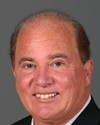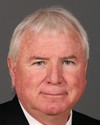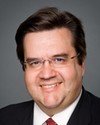I'm very pleased to have you here, Mr. Williston. I hope we'll be seeing you on February 20th because Minister Fortier will be here. We'll be talking about the ISS
and we'll talk about ITAR, because there's a difference between the first-, second-, or third-line maintenance under ITAR. Of course, at Trenton we can maybe do the first-line maintenance, change the oil, put some gas in the tanks, and some windshield washer, but that's another issue, and ITAR is a major issue.
We will have a debate on that, but I want to come back to Colonel Burt
and to General Lucas.
It is true because I myself have been a minister. One is accountable before Cabinet and one wants to know how things work. One therefore asks questions and becomes more interested. I was not minister of Defence but if I had been, I would certainly have wanted to know how the process works. I would set directions and I would make sure that the experts were doing their work in terms of the criteria that apply to the equipment that we need. Of course we have to help and support the Canadian Forces. I might also have an electoral platform and I would want to make sure that we have these aircraft.
You stated that ministers are particularly involved in their party's and their government's priorities, and that is true. General O'Connor is most certainly interested in strategic airlifter.
Colonel Burt, you've mentioned there was a refinement process. It was done and concluded on June 14. You sent e-mails to the chain of command, but there was a meeting on May 1 with the Minister of Defence. And when you look at no matter what refinement we're talking about, for the last six years, every time we talked about specific requirements regarding the weight lift at the platform, it was 43,000 pounds. So somebody said something to somebody.
I want to know if it would have been better, for the sake of perception, to have had a meeting with the minister after the refinement process had been done, because if he had been there on May 1 and he had asked the expert, because of what you mentioned, and you're the one, and that your recommendation was to keep the 43,000 pounds, what happened? Why did it change in due course?
And finally, Mr. Williston, please let's talk about the C-130Js. We spoke about the C-17s, but let's talk about the C-130Js and the $888 million per plane.
General.




